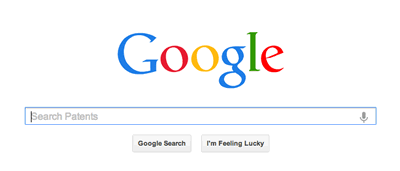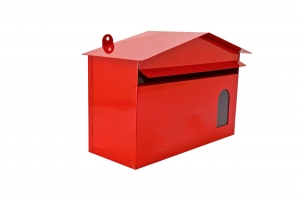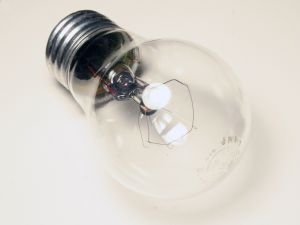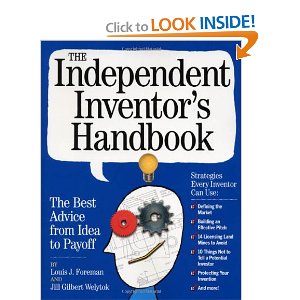 So you have created something fantastic but you don’t know if your invention is original enough to qualify for a patent. Before you spend hundreds (maybe thousands) of dollars submitting a patent application, you need a patent search performed to see if someone else has already patented your idea.
So you have created something fantastic but you don’t know if your invention is original enough to qualify for a patent. Before you spend hundreds (maybe thousands) of dollars submitting a patent application, you need a patent search performed to see if someone else has already patented your idea.
You may be put off, however, by the $500 or more (often much more) that it traditionally costs to hire a professional to do the search for you. Well, here is the solution – do a free patent search yourself.
Previously, cash-strapped patent applicants would be deterred from performing a patent search by the cost of hiring a professional. Today, thanks to the internet, you can easily perform your own free patent search without spending any money at all. The only requirements are a reasonable amount of patience and effort and an internet connection.
What follows is a brief overview of the recommended steps to perform a free patent search on the United States Patent and Trademark Office (USPTO) website. We start with the USPTO website because if someone else has already patented your idea in the United States, it should most likely show up here.
On the USPTO website you can find U.S. Patents from 1976 to present, published U.S. Patent applications from 2001 to present and perform bibliographic searches of all patents from 1790 to present. In addition, you can view, print and download any patent issued before 1976. It is important to note, however, that unpublished patent applications are unable to be searched at all.
If you don’t have an internet connection (which is unlikely are you’re reading this article), you can use the tools and resources available at a Patent and Trademark Depository Library (PTDL). A PTDL is a library designated by the USPTO to house copies of U.S. patent and trademark materials. There is at least one PTDL in every state and access is free to the public.
Getting Started at the USPTO
Before you get started with a free patent search, you may want to take some time to go over the resources available on the USPTO website. The USPTO has a tutorial here that can help you prepare to perform a free patent search on the site.
Searching the UPTO website
Step 1) Classifying your Invention
Before you even begin a free patent search, brainstorm important keywords that classify your invention. It may help to begin by writing a brief but accurate description. Pay attention to important keywords and technical terms that may apply to your invention. Use the following questions as a guide:
- What does it do?
- How does it do it?
- What is it used for?
- What is it the result?
- What solution does it provide?
- What is it made of?
In addition, it may also help to order your keywords from general to specific.
Next, visit the USPTO website and look up your keywords in the Index of the U.S. Patent Classification System (USPC). The USPC is an alphabetical index of common terms used to classify inventions. Take note of the class and subclass numbers that your keywords are associated with. These numbers are also known as “classifications” and will be very important to your search.
Now, go to the Class Schedule of the Manual of Classifications and make sure that the classifications that you noted are indeed relevant to your invention. Thoroughly scan each class schedule for relevancy, including both the main class and the indented subclasses. Read the class and subclass definitions. This will help you verify that your invention fits within the scope of the relevant class. The definitions will also provide you with notes and suggestions for further searching.
Step 2) Locating the Patents
Once you have identified the classes and subclasses that are relevant to your invention, use them to locate and review all the issued patents and published patent applications for each classification. Every patent from 1790 to present and all published patent applications from 2001 to present, for every classification, can be found here.
Step 3) Review and Reference
Review every patent that is closely related to your invention. View the drawings and read through the specification and claims sections. Pay very close attention to the claims, as they define the scope of the patent being reviewed.
Check each reference cited in the patent document. Make sure to include all “forward references” as well. Forward references are references to more current documents that cite the particular document being reviewed.
Also check the “U.S. Cl” and “Field Search” sections of each full-text documents to make note of any additional classifications that you need to search.
Step 4) Repeat
Finally, repeat this entire process for each patent referenced and every new classification searched. Make sure to make note of every potential patent or published application that may impact your ability to patent your invention. These will need to be cited in your completed patent application.
Other Free Patent Search Databases
In addition to the USPTO’s system, there are other websites that inventors can visit to perform a free patent search. The most prominent of these is Google Patents, where you can perform full-text searches of all US patents going back to the year 1790. Because of this aspect, many patent searchers prefer Google Patents to the USPTO website, where many of the older patents are not text-searchable.
Patent Lens is another free full-text free patent patent search information resource. Patent Lens allows you to search over 10 million full-text patent documents from the United States, Australian and European Patents offices, as well as international patent applications made through the Patent Cooperation Treaty (PCT).
Paid Searches
There are also a number of fee-based websites available for your use to do a paid search. These include:
Delphion Intellectual Property Network
Non-Patent Literature
The purpose of performing a free patent search is to discover any information (prior art) that might have relevancy to the patentability of your invention. This information, however, is not limited to patent literature. Therefore, your free patent search must also include a search of non-patent literature as well. This includes, newspapers, magazines, dissertations, conference proceedings, information published on websites, etc. Below is a list of useful resources available for locating non-patent literature:
The US Defense Technical Information Center
In addition, search engines such as Ask.com, Cuil, Bing and Yahoo! Search are excellent resources for searching non-patent literature.
Offline
To located relevant trade magazines and books, the following directories may also prove useful:
Directory of Books, Catalogs and Magazine Printers
Directory of Small Magazines Editors & Publishers
Free Patent Search Internationally
Finally, no comprehensive patent search is complete without a search of foreign patents and non-patent literature. The following sources will allow wide searches of foreign patent documents and non-patent literature:
- The European Patent Office (EPO) – has a worldwide database which enables you to do a free patent search for information regarding published patents in over 80 different countries.
- The World Intellectual Property Office (WIPO) – A United Nations agency that administers various international treaties dealing with intellectual property. Here you can search the bibliographic data regarding patent applications published by WIPO in the last 24 months.
Hopefully after all the searching, you will discover that your new invention is as innovative as you thought it was. But, always bear in mind that rarely will a search turn up everything relevant to a particular invention. Furthermore, it is not possible to examine unpublished patent applications at all. So, your free patent search should only be seen as a way to minimize, but not eliminate, the uncertainty of your invention’s novelty.


 Creating a new invention can take lots of time and money. So, for most inventors finding away to commercialize their invention is very important. Commercialization will allow you to recoup the money you spent developing the invention and to be rewarded financially for your innovation.
Creating a new invention can take lots of time and money. So, for most inventors finding away to commercialize their invention is very important. Commercialization will allow you to recoup the money you spent developing the invention and to be rewarded financially for your innovation.
 Is it possible to patent an idea? “Patenting an idea” is one of the most commonly used expressions when someone wants to be granted a patent for something new that they have developed. However, an idea itself cannot be patented.
Is it possible to patent an idea? “Patenting an idea” is one of the most commonly used expressions when someone wants to be granted a patent for something new that they have developed. However, an idea itself cannot be patented.
 Inventors have enjoyed the ability to file a Provisional Patent Application since June of 1995.
Inventors have enjoyed the ability to file a Provisional Patent Application since June of 1995.
